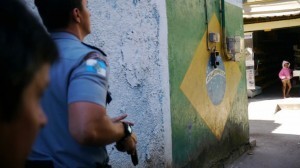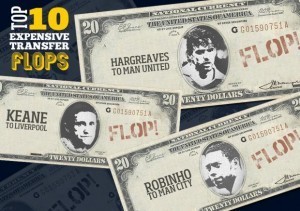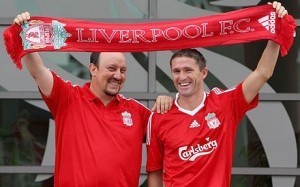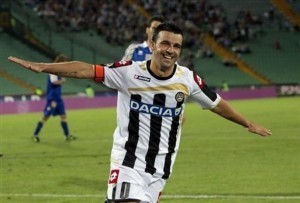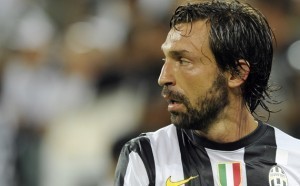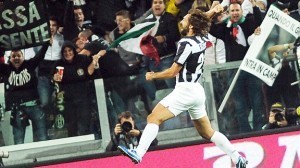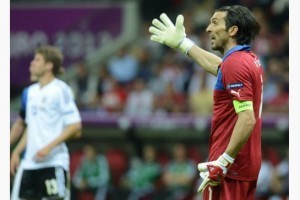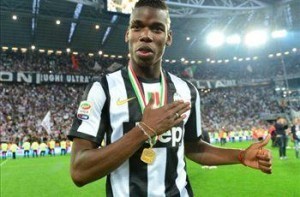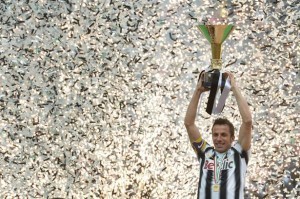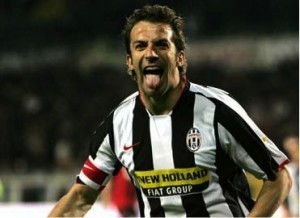Laurent Dubois's Blog, page 93
October 23, 2013
Fascinating Details from Sir Alex Ferguson’s New Book

Sir Alex Ferguson, the legendary Manchester United manager who stepped down at the end of last season, recently released a autobiography. Befitting a man widely lauded as the best manager of the modern era, the British press has thrust the book’s juicy details into the spotlight. In his own words, Ferguson Ferguson dishes on subjects ranging from his fallouts with stars such as David Beckham, Roy Keane, Ruud van Nistelrooy and Wayne Rooney to his loyalty to United’s owners, the Glazer family, to his often testy relationships with managers Jose Mourinho and Arsene Wenger. The Guardian, likely knowing that I will not have time to read the book until winter break, has done a public service and released a synopsis of 10 stories that Sir Alex discussed.
Of The Guardian’s list, I found Ferguson’s admission that “there was an intensity and volatility about the modern media I found difficult” to be the most surprising. One example of this Sir Alex, as the article notes, did not speak to the BBC, one of Britain’s largest media entity, for seven years in response to a documentary that painted his son Jason in a negative light. Mostly though, I find this interesting because Fergie, as Manchester United fans call him, was known for his “mind games,” in which he ostensibly toyed with the minds of referees as well as opposing managers and players. That Sir Alex, often accused of manipulating the media for United’s advantage, found today’s omnipresent media overbearing demonstrates the pressure 24/7, instant media coverage places on managers. If Ferguson struggled to deal with the media in recent years, it is likely that even the most media-friendly of managers is merely treading water in their dealings with the press.
If the USA hosted the 2022 World Cup…
Throughout the year, post after post on this blog has detailed the trials and tribulations of the 2022 World Cup, which is currently slated to be held in the Middle Eastern nation of Qatar. From internal disputes among FIFA board members to the sweltering summer heat and the unprecedented proposed move of the World Cup to the winter—in the middle of the club soccer season—it is safe to say that the 2022 World Cup has been nothing short of a disaster thus far.
As the saga surrounding Qatar rages on, many pundits across the soccer landscape have argued for a change of venue. What if no resolution can be reached on summer versus winter? What if they run into issues regarding infrastructure, tourism or the regulation of alcohol sales in a conservative Islamic nation? Should FIFA deem that a last-minute change of the host nation is necessary for 2022, one of the leading candidates to host the cup would be the United States, which was shut out of its bids for both the 2018 and 2022 World Cups. At this point, the United States would make sense because it already has a multitude of venues that would work and its developed infrastructure and transportation systems would be beneficial to host the tournament.
So this begs the question: if the United States had to host the World Cup in 2022, where would the matches be played? Here are my picks for the 10 venues to host matches in the 2022 World Cup, some of which may surprise you:
1. CenturyLink Field
Location: Seattle, Washington
Capacity: 67,000
This is a fairly obvious choice for a World Cup venue. CenturyLink Field is set in the beautiful and soccer-crazed city of Seattle and the Pacific Northwest is home to some of the rowdiest soccer fans in North America. The venue is sizable and features a scenic view of the Seattle skyline, and the summertime temperatures are often very manageable. As far as soccer venues go, this one is a no-brainer.
2. Rose Bowl
Location: Pasadena, California
Capacity: 94,392
It doesn’t get much more iconic than the Rose Bowl. Sitting in Southern California and just outside one of the largest and most diverse cities in the United States, the Rose Bowl held more than 93,000 fans for the championship match of the 2011 Gold Cup between the U.S. and Mexico. As one of the classic American sporting venues, the Rose Bowl cannot be left out of the World Cup picture.
3. AT&T Stadium
Location: Dallas, Texas
Capacity: 80,000
Expandable up to 105,000, the $1 billion stadium (known by most as the JerryDome after famed owner Jerry Jones) has raised the bar on sporting venues since it first opened in 2009. Jones has always tried to push the bar on holding bigger events (like seating more than 108,000 people for the 2010 NBA All-Star Game), so the World Cup sounds like a logical next step here. Plus, fans get to take in the irony of watching 5-foot-4 Lionel Messi play on a video board that is 72 feet wide and 160 feet high. After all, everything is bigger in Texas.
4. Arrowhead Stadium
Location: Kansas City, Missouri
Capacity: 76,416
Kansas City may be the first surprise on this list of host cities, but as far as MLS cities go, Kansas City is home to one of the most passionate soccer fanbases in the country. Arrowhead Stadium is one of the most difficult places to play in the NFL and would make for a great atmosphere for a World Cup match. For those who would be in favor of a soccer-only venue in this case, Sporting Kansas City’s home field is well below the FIFA-mandated 40,000-seat minimum capacity for a World Cup stadium. Nestled in the heart of the Midwest, Kansas City would make a great host city, as long as some of the world’s top footballers don’t get too full on the ribs before a match.
5. Soldier Field
Location: Chicago, Illinois
Capacity: 61,500
With its scenic view of Lake Michigan and wide array of restaurants, culture and night life, Chicago would make a great host city for a World Cup. Although Wrigley Field was a site for the NHL’s Winter Classic recently, Soldier Field provides a better layout and atmosphere for a World Cup match where the stadium is meant to be divided between multiple sets of fans.
6. The Horseshoe
Location: Columbus, Ohio
Capacity: 102,329
This one may also come as a surprise, but Columbus, Ohio would make an excellent World Cup site. The city played host to matches during the 2013 Gold Cup and was an excellent choice. Columbus is home to the Columbus Crew, which has a rowdy and passionate group of fans, and although their home stadium would be too small to host World Cup matches, being able to use The Horseshoe provides the best of both worlds—a large venue that is one of the most iconic stadiums in college football. All of a sudden, Columbus starts to seem like a much better fit.
7. MetLife Stadium
Location: East Rutherford, New Jersey
Capacity: 82,566
Let’s be honest—love it or hate it, there is no way that New York isn’t making this list. Nothing says America like a backdrop of the Statue of Liberty, even if it is from across the river in New Jersey. If this stadium can play host to the Super Bowl in the frigid cold this February, a World Cup match shouldn’t be any problem. Considering New York is often referred to as a city of immigrants, the turnout for these matches would definitely have the most international flavor of the entire tournament.
8. FedEx Field
Location: Landover, Maryland
Capacity: 85,000
You can’t hold the World Cup without playing some matches in our nation’s capital. Washington D.C. doesn’t have a rich soccer history by any stretch, but I bet you could get a lot of foreign diplomats out to see the games there, which could lead to some interesting bets (or impending military conflicts) between rival nations on the soccer pitch. In general, hosting an event of this magnitude in Washington D.C. does have most liability from a national security standpoint, but having future President Grant Hill cheer on the Americans in the World Cup would be a memorable moment.
9. Sun Life Stadium
Location: Miami, Florida
Capacity: 74,918
A city with so much Latin American influence should be a shoe-in to host a World Cup match. Picture a match with Mexico or Puerto Rico being played in Miami—the crowd would go wild. Miami can’t come close to filling their stadium for the Dolphins or Marlins, and even Heat fans tend to walk out before the end of games, but if the World Cup took its talents to South Beach the tournament would be a party all the way down Calle Ocho.
10. Candlestick Park
Location: San Francisco, California
Capacity: 69,732
With its proximity to a large city and the San Francisco Bay, the home of the 49ers is my final choice as a World Cup venue in 2022. Although the most scenic sporting venue in San Francisco is without a doubt the Giants’ AT&T Park, the stadium layout is less conducive for the fan experience at a soccer match.
Have better ideas for potential World Cup venues? Post them in the comments below.
October 22, 2013
En préparation pour la Coupe du Monde: Les gangs de la drogue de Rio
J’ai trouvé un article très intéressant sur les gangs dans Rio qui se préparent à vendre des drogues pour la prochaine Coupe du Monde. Cette équipe des journalistes suivre l’un des gangs les plus dangereux de Rio après avoir essayé de gagner leur confiance depuis de nombreuses semaines. En préparation pour le Coupe du Monde, le gouvernement a essayé de réprimer plus sévèrement les gangs mais au cours des 4 dernières années, ils ont seulement autorisé 34 “favelas” (les taudis) de 1,000. En fait, le journaliste a parlé avec un fonctionnaire brésilien qui leur a dit que probablement ils seraient capables de reprendre seulement 40 favelas avant la Coupe du Monde. Ils se concentrent principalement sur les zones à proximité des endroits où les touristes pourront traîner. Cependant, ces efforts n’ont pas été très efficaces, et beaucoup de gens innocents ont été tués dans des tirs croisés. Les gangs ne sont pas très inquiets par la police – selon eux, le changement est seulement sur la surface. Ils disent que la vraie guerre est qui sera en charge du commerce de la drogue au cours de la Coupe du Monde et les Jeux Olympiques. 500,000 touristes sont attendus à visiter pendant le tournoi. Alors, les gangs qui gèrent le trafic de drogue au Brésil envisagent leur plus grande opération jamais.
Dans le vidéo, on voit d’abord quelques membres de gang pendant ils ont coupé ouvert de grands blocs de cocaïne pure et après ils préparent la cocaïne à vendre en le mélangeant avec de la levure chimique et d’adrénaline. Le journaliste demande, « Pour un kilo de cocaïne, combien de la lavure mettez-vous ? ». Le membre répond, « 15 boîtes de la lavure. » Après, ils ajoutent le dernier ingrédient secret : l’adrénaline. Voilà. C’est la recette pour un des plus grandes entreprises de Rio. Le gang a aussi sa propre armée privée pour protéger son opération de plusieurs millions de dollars. Ces hommes vendent 2 kilos de cocaïne par jour, et l’année prochaine pour la Coupe du Monde, ils s’attendent à doubler ça.
Le rapport entre la police et les gangs est tendu, mais ces hommes ne montrent pas de signe de l’inquiétude. Un membre du gang remarque, « les policiers sont des lâches, ils viennent ici seulement quand les rues sont pleines des gens. Je voudrais les voir venir dans la nuit, ils vont entendre beaucoup de coups de feu, beaucoup de coups de feu !»
Puis, le journaliste suit la police comme ils vont à la « City of Gods » favela. Ils repèrent certains dealers, mais les gangs ont déjà préparé les portes de sortie. La police a eu un peu de succès – crimes de meurtre et agression à main armée sont en baisse dans les favelas pacifiées, mais est-ce que c’est suffisant ? Un homme était exécuté dans le milieu de la journée devant de nombreux témoins, juste un mile du stade de la Coupe du Monde.
Il est intéressant de noter que les résidents de ces favelas pacifiés dit qu’ils ont la confiance aux trafiquants plus de la police, parce qu’ils ont grandi avec eux toute leur vie, donc ils respectent les résidents plus.
Avec seulement huit mois avant la Coupe du Monde, le gouvernement n’a pas beaucoup du temps pour effacer le crime avant les touristes arrivent. Peuvent-ils faire ? Peut-être sur la surface, mais c’est tout. Tous les gangs veulent un morceau de la richesse de la Coupe du Monde et la police ne sera pas capable de les arrêter.
Regardez le vidéo ici:
October 21, 2013
A Soccer Field Carved from a Mountain
I wanted to share this short video clip I came across in the New York Times. While we have been talking a lot about the astronomical political and economic effects of the 2014 World Cup on Brazil, I think this video highlights a more personalized perspective on the passion Brazilians have towards the sport. Soccer is a tradition that has been passed down from generation to generation in this community. Why pour billions of dollars into a stadium when you can dig one out of the ground?
This video was the precursor to an article about pickup soccer, or pelada, and it’s popularity in Brazil. This anecdotal reflection on the importance of the game is definitely worth a read.
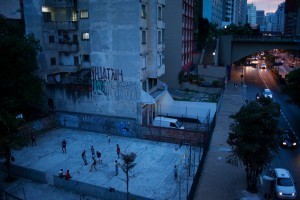
The juxtaposition of the modernized streets with the spontaneous game of pelada embodies the beauty of the street game.
Organized soccer clearly has it’s value as it draws fans from all over the world who glorify professional players and teams through a national identity. There is something magnificent about a stadium filled with eager fans chanting and jeering. But I believe one finds true beauty in the sport by recognizing it as a street game. The pure essence of soccer comes not from fancy uniforms, screaming coaches, or shiny trophies, but from the innate ability to play. Pelada’s prominent existence in Brazilian culture reflects this notion that at it’s core, soccer is a simple game. It is an integral part of Brazilian culture which often serves as an escape for all of it’s citizens: children, day workers, busboys, and waiters alike. The ball reflects the passions and dreams of the average Brazilian, who uses soccer as an escape from crime, societal problems, and everyday hardships. It gives hopes to young people that one day, they may rise to the ranks of their favorite soccer stars. The power of soccer transcends socio-economic status and fame. Pelada plays just as integral a part in soccer culture as the national Brazilian team does.
October 20, 2013
The ignorance and naiveté surrounding the valuation of Football Players
As we the fans have seen over the past decade or so, the valuation of football stars has sky rocketed to new heights, heights that too many fans, can never be reached. Nonetheless there seems to be a large correlation to big money spending and the outcome of that given player at a club. How much can we actually value a player? Clubs seem to be always spending money on the wrong transfers. For instance, Liverpool’s 60 million pound splurge on Jordan Henderson, Andy Carroll and Stewart Downing or Chelsea’s 50 million spent on Fernando Torres or my personal favorite Ricardo Quaresma astounding 30 million pound move to Inter, however in the past three years economists such as Simon Kuper have been trying to argue that the net amount spent on transfers bears little relations to where they finish in the league. While, on the other hand, spending significant sums of money on wages generally helps the clubs success rate.
Using the average league position in the Premier league compared to the relative wage spending there have been accurate results to Simon Kuper’s hypothesis over the past 15 years.
Club
Average League Position
Wage spending relative to the average spending of all clubs.
Man Utd
2
3.16
Arsenal
2
2.63
Chelsea
3
3.50
Liverpool
4
2.68
Newcastle
9
1.93
Aston Villa
9
1.60
Tottenham
10
1.34
Everton
10
1.41
Middlesborough
12
1.32
Leeds
13
1.70
West Ham
14
1.31
Blackburn
14
1.41
Fulham
16
0.92
Southampton
16
1.24
Sunderland
18
0.92
Man City
18
1.24
Wigan
19
0.59
Wimbledon
19
0.94
Birmingham
20
0.74
Leicester
20
0.88
Let’s use a manager I despise as an example. Rafel Bentiez during his time at Liverpool encountered a “host of poor overpaid players” as Carragher wrote in his biography. He was charged with the blame of buying Ryan Babel for 15 million euros, Jermaine Pennant for 9 million, Andrea Dossena for 10 million and my personal favorites Alberto Aquilani and Robbie keane for 25 million a piece. In 2008 Benitez signed Robbie Keane, at 28 years old (debatably his peak) for an astounding 25 million euros. Keane had never had a season where he scored over 20 goals. Six months after bringing him to Anfield, Benitez sold him back to Tottenham for 15 million euros. For all the spending Benitez did, many of his true stars were homegrown talents like Sami Hyypia, Steven Gerrard and Jamie Carragher.
In the six years Benitez spent at Anfield he spent a total of 164 million euros more than he received from transfers compared to Sir Alex Ferguson’s 40 million, yet in those years United won 3 titles compared to Benitez’s best 3rd place finish. The largest problem is that managers often pay for the name, not for the play, especially those that are new to a club and are desperate to make an impression.
Over the past decade football has taken to stats through the evolution of stats in US sports, in particular Baseball. Billy Beane, the Oakland As general manager commemorated in Michael Lewis’s Moneyball, who subjugated the failings of baseball’s player-trading market to turn the Oakland As into a consistent powerhouse in the American League, has managed to do so by spending the least money on salary in the Major League.
Beane has been so successful that the world has adapted his methods to suit there sport. From this Kuper has created golden rules how to approach the transfer market.
A new manager wastes money on transfers: don’t let him
2. Stars of recent World Cups or European Championships are overvalued: ignore them
3. Certain nationalities are overvalued (Brazilians and Dutch, for example)
4. Older players are overvalued
5. Centre-forwards are overvalued; goalkeepers are undervalued
6. The best time to buy a player is when he is in his early twenties
7. Sell any player when another club offers more than he is currently worth
8. Replace your best players even before you sell them
From these 8 points there is one team that immediately come to mind, teams that make profits, win a lot of matches and produce great players right before they become superstars: Udinese
The line between playing a successful brand of football and running a profitable business is often a daunting task when anchoring a club, but in the case of Udinese, it has always been “bianconero”. Ever since taking over the reins of the Friulani over 25 years ago, Giampaolo Pozzo has maintained a clear vision on how the outfit would operate.
Their scouting system is vast and spreads over countless countries, but their focus has always been in both Africa and South America, continents with a vast number of unknown players such as the Kwadwo Asamoah, Mehdi Benatia, and Alexis Sanchez’s of the world. Pozzo has developed this connection buy hiring locals in foreign markets in order to tap into local talents. In addition, he has realized that a small market club like Udinese is never going to be able to bring the revenue of a European supergiant so he recently purchased Spanish club Granada in 2009 and more recently English side Watford to expand the system further. Players can now gain experience in vastly different footballing landscapes before moving back to Udinese a more matured prospect. He can take the most well rounded players who have gained experience across the world and therefore will be more appealing to potential suitors.
Over the past decade Udinese have netted close to €350m from players. In the last year alone the sales of stars such as Gokhan Inler (15mill) to Napoli, Alexis Sanchez (40 mill) to Barcelona, Cristian Zapata (13mill) to Villarreal, Sulley Muntari (13 mill) to Portsmouth and other amounting to over 150 million. Despite the sale of all there key players, the Friulani still consistently qualify for the Champions League preliminary round again last season, leapfrogging the likes of Inter, Napoli, Lazio and Roma.
Udine is a city of 100,000 in the misty mountains near the border of Albania and Italy. With crowds at the Stadio Friuli typically no more than 17,000, and the majority of ticket sales going to the local commune, Udinese’s game day money making is non-existent. As the Swiss Ramble, a soccernomics blog clearly states Udinese’s 2009-10 wage bill of €31m cannot compare with €230m and €172m at Internazionale and Milan. Only the club’s savior, Di Natale, has an annual salary over €1m; Sanchez himself was only earning €700,000 (he now earns 4 million with Barcellona.) Internazionale, Milan and Juventus, all finish the year with revenues of over €200m. At €41m, Udinese did not match a single Premier League club. Income from television accounted for €26m; Internazionale’s in there treble season was €138m.
Transfer Success
Name
Bought
Sold
Pablo Armero
From Palmeiras 2010
Fee: €1m
To Napoli 2013
Fee: 13 m
Gokhan Inler
From FC Zurich 2007
Fee:c. €600,000
To Napoli 2012
Fee: 13 m
Kwadwo Asamoah
From Bellinzona 2008
Fee: c. €400,000
To Juventus 2012
Fee: 15 m
Mehdi Benatia
Free
To Roma 2013
Fee: 13.5m
Samir Handanovic
From AC Rimini 2008
Fee: 800,000k
To Inter 2011
Fee: 16m
Mauricio Isla
From Universidad 2007
Fee: 550,000k
To Juventus 2012
Fee: 17mill
Fabio Quagliarella
From Sampdoria 2007
Fee: 7.5 m
To Napoli 2009
Fee: 18m
Udinese has created the foundations for every club to follow. Never to they overspend on transfers. They always buy youth, build players and then sell them when they are worth more than there value. Although this is an incredible model teams such as Chelsea, Juventus and Barcelona have to adopt this model in order to create a winning model. Udinese will never be able to win with this team, but they sure are an entertaining team to watch when the Serie A season starts up each August.
October 19, 2013
Changing the Game
If you could change the game of soccer, how would you do it? With Brazil being the first instance where goal line technology is being implemented, I got thinking as to how soccer could change for the better. Small changes to the game could make it more popular in the US. We are a country of instant gratification, and the more goals the better is what pleases us. I came up with a theory as to how the game of football could change for the better.
Here’s my article describing my theory on ESPNW.com-
http://espn.go.com/espnw/athletes-life/blog/post/7763/make-great-game-better
Check it out and let me know what you think!
Mexico: Stayin’ Alive
I know a lot of people may have watched the USA vs. Panama game on Tuesday night, but did everyone catch the significance of this game for Mexico? Soccer gods must still exist.
I remember when I was under 15 playing in regionals for soccer in Cary, North Carolina. In the US youth soccer system, teams go through state cup where the winner advances to regionals and then if fortunate enough to win they advance to nationals. My U-15 year consisted of a round robin that will scar me forever. I remember it so vividly. My team was playing against a team from Louisiana right beside the field where two Texas teams, D’feeters and Lonestars, were playing each other in a Lonestars must win game for us. My team had to beat the Louisiana team by 4 and we were already winning 6-0, while Lonestars had to beat D’feeters 2-0 for us to advance to the semifinals. Everything was going as planned, Lonestars was up 2-0 with 10 minutes left and we were up 6-0. My coach even took the starters off the field and put them on the bench to rest up for the semifinal game the next day. The tide quickly turned after that though. D’feeters banged in two goals with 5 minutes left to make the score 2-2. Of course, what we needed to happen to advance did not. When does it ever work out the way you need it to in sports anyway? NEVER…well hold that thought. Mexico would beg to differ. Mexico was about 60 seconds away for not qualifying for the World Cup in Brazil when the miraculous happened. Everything fell into place for them Tuesday night as the USA defeated Panama 3-2 and kept Mexico’s World Cup dreams alive.
Here are highlights in case you missed it. It is worth the watch:
The weirdest thing about this whole story is that the USA did not need to win the game against Panama to advance to the World Cup. They were going to go regardless. Panama had no doubt in their mind after their 84th minute go-ahead goal that they too were going to advance as a 4th seeded team In CONCACAF. All hope seemed doomed for the Mexican side after this. However, the USA squad was not going to quit. For many players on the USA squad that night, it was a huge opportunity to show head coach, Jurgen Klinsmann, that they deserved the minutes they got and that they could compete for starting positions. I am sure Graham Zusi’s injury time equalizer and Aron Johannsson’s game winner off the last play of the game silenced any of Klinsmann’s doubts. This game also brought to Klinsmann’s attention the brutal aspect of the sport and the persistent attitude of the US squad.
Right after the match, “Gracias USA” was trending all over Twitter. US Soccer replied:
Mexico will have to face New Zealand next month in a two-legged playoff game if it wants to play in Brazil 2014. It is great that Mexico can advance, but an important take away is that game changers were born Tuesday night for the US squad. Soccer is a crazy and unfair sport at times. Unfortunately, one team’s triumph means another team’s defeat. Although the US side has not been deemed world cup title worthy as of yet, they have shown that they are a team no one will want in their group come Summer 2014. The Panama vs. USA game definitely showed that anything can happen throughout the course of a game. This brutal aspect of soccer will make for a very interesting World Cup in 2014. Hopefully for the USA team, keeping Mexico in it does not turn around to haunt them later.
The future of Mozart
To the Azzuri, Andrea Pirlo is known as “l’architetto” (the architect). To Serie A fans, he is known as “il professore” (the professor). To Milan, he was known as “no longer essential.” And as Juventus fans set their sights on a third straight Scudetto, they hope for one thing: that in a few months, Pirlo simply won’t be known as “gone.”
Pirlo’s contract with Juventus expires this summer, and thus, the decision to offer Pirlo an extension is looming. With his success at Juventus, fans were confident that Juve would structure a new deal for its most important player. Yet general director Giuseppe Marotta and president Andrea Agnelli have made it clear that contract negotiations will be on hold until February or March of next year. In the meantime, the reverberations of this neglect have echoed throughout Europe, as Milan, Real Madrid, Manchester United, Chelsea, Arsenal, and, most recently, Tottenham, have expressed interest in signing the Juve midfielder. And while all of these clubs would greatly benefit from such a move, the impact of such a departure would be utterly disastrous for Juventus.
After spending ten seasons with AC Milan, Pirlo was signed by Juventus in 2011 on a free transfer of contract until 2014. Pirlo explained that the real reason he left Milan “…was because [Massimiliano] Allegri wanted to use Ambrosini and Van Bommel in front of the defense. So that meant I had to change position on the pitch. So I said, ‘No, thanks’ to Milan and chose Juve. Milan decided that I was no longer useful to them.” Moreover, after winning the Scudetto with and without Pirlo on the pitch, Milan chief executive Adriano Galliani felt as though Pirlo was no longer the same dominating presence that had tormented opposing defenses for years, both on the national and international scale.
Juventus, on the other hand, was a team still rebuilding after losing many of its star players upon demotion to Serie B following the Calciopoli scandal of 2006. They believed that the 32-year-old’s career was far from over and that he was the last piece of the puzzle in restoring Juve’s dominance of Serie A. Once again emerging as one of the best playmakers in football, Pirlo helped Juventus capture consecutive Scudetti during the 2011-2012 and 2012-2013 campaigns. Yet with the impending expiration of his contract, management has not made resigning the maestro a top priority, as Agnelli is happy to let Pirlo decide his own future at Juventus.
Unlike most of the recent transfers (yes, I’m looking at you Gareth), Pirlo’s predicament is particularly unique. After a tremendous club and international career in which he amassed 4 Serie A titles, 2 Champions League titles, and a World Cup for Italy in 2006, Pirlo’s decision is simple: he just wants to find somewhere he can play. He remarked, The emergence of 20 year-old Paul Pogba has made Pirlo feel as though his presence is no longer fundamental to the team’s success. Moreover, his frustrations have been magnified following his antics at the Hellas Verona game. After being replaced in the 65th minute, he walked straight past the team bench and into the tunnel without remaining on the bench for the rest of the game. Though there was no rule against this, head coach Antonio Conte explained that if a player leaves the pitch, unless it is for medical treatment, that player will be fined. Yet Conte declared that he has no ill will towards Pirlo and insists that there is no bad blood between the two. I’ll leave it up to you about whether Pirlo’s exit from the field is a foreshadowing of a future departure from Juventus or simply something that the media made too much of. Regardless, Pirlo’s attitude eerily resembles that after his tenth season at Milan, and with Tottenham “lining up to make a bold move for Italy playmaker Andrea Pirlo,” l’architetto’s future at Juventus does not seem optimistic, which does not bode well for Juve.
Amidst these transfer rumors, Juventus legend Gigi Buffon has spoken out by saying, “Not holding on to Pirlo should not even be an option. If Pirlo were to leave, we might as well dismantle the stadium bit by bit and stop playing football altogether.”
And though these comments seem extreme, Buffon could not be any more accurate in his assessment of Pirlo’s value. He is the most experienced player in Europe and represents a composure that targeted successors of Vidal, Pogba, and Marchisio cannot match. Tactically, he is the heart of this team, one whose passing and ball control is one of the best in the history of the game. Moreover, Juventus is simply not ready for life without Pirlo.
Paul Pogba is arguably Juve’s most skillful player, yet his playing style is nearly opposite that of Pirlo. While Pirlo is steady and patient, Pogba is fast and pressing. With Pirlo at midfield, it is a slower game of precision, and with Pogba, it is a game of full-on attack, which has often left a defense prone to quick counterattacks. And while Pogba strives to emulate the playing style of Pirlo, Pogba has shown that he is not quite there yet. In the Inter Milan and Chievo matches, Pogba was off his game, as he tried to slow things down a la Pirlo, yet his hesitancy nearly proved costly in both occasions. Moreover, with soccer in Italy becoming more of a transient, developmental experience, the future of Paul Pogba is even more ambiguous, as he has reportedly been linked to transfer rumors throughout Europe. Thus, by investing in Pogba at the expense of Pirlo, Juventus may wind up losing both players, which would prove calamitous for a team still searching for an identity.
Nearly two weeks ago, Pirlo tormented his former Milan club, scoring from a free kick (nearly twice) in a 3-2 victory for Juve. Juventus cannot make the same mistake that Milan made, as Pirlo has shown that even at 34, he is still one of the top players in the world.
The best-case scenario would be to offer Pirlo a 2 year contract and let him retire contently to his vineyard in Brescia where he can continue making his cherished wine.
October 17, 2013
My Favorite Player of All time: An Italian icon, the Ultimate Bianconeri , a gentleman and a player the will always be missed in Turin – Alessandro Del Piero
Growing up a Juventino in the city of Turin there was only one name you needed to know Alessandro Del Piero. You entered the stadium every Sunday hearing 40,000 fans screaming “ C’e un capitano, C’e solo un capitano, Alex Del Piero,” (there is a captain, only one captain), it was riveting, exciting and a joy to behold for a player that only represented one club for 19 years of competitive football. It wasn’t just his ability to pass through defenders like a magician with an invisible ball at his feet, or his ability to score when his team needed him, it was also the class he represented off the field. Unlike the Totti’s, or Cassano’s or Balotelli’s of our generation, Del Piero lived a simple life of an man who exhibits the characteristics the game needs today. He was a fighter, a leader and an incredible player to watch.
He was signed by Juventus at the age of 16 in 1993. He was brought into the team to replace the legendary Roberto Baggio who was slowly creeping towards his peak. He was a champion of every competition available to him in Italy- the champions league, Coppa Italia(2 times), Supercoppa (4 times), Serie A (9 times), the FIFA World Cup and the most prestigious competition in the world, the 2006 World Cup.
For all the 19 seasons that Ale would spend with the Bianconeri, he set records in all aspects of the game. He leaves Juventus as the all time leading top scorer with 289 goals, a record that was once held by the former Juventus President Giampiero Boniperti. Alessadndro Del Piero is the all time leading scorer for Juventus in all other important competitions as well, such as Champions League (45 goals), UEFA Competitions (53 goals), add to this, the most capped player in the history of Juventus (704 matches played), a record that was once written in the name of another Juventus legend – Gaetano Scirea (552 matches played).
He had the ability the change the course of a game with the snap of his fingers, the precious Serie A winning goal against Fiorentina in 1994, the lovely back-heel goal against Borussia Dortmund in the finals of the Champions League, the only goal against River Plate that would secure Juventus the Intercontinental Cup and the many of his trademark freekick goals.
There’s no end to the happiness he gave as an obsessed teenage fan. There are moments that I will never forget being in the stands to witness history. My three great memories of Del Piero are moments that I couldn’t replicate even if I tried.
The first moment is the one most dear to me at the Santiago Bernabau. Juventus were travelling to Real Madrid to play the Galacticos without our star winger Pavel Nedved. It was a game that looked like a crushing in the making against a team that had Zidane, Robinho, Sneijder, Robben, Ramos, Casillas, Van Nistelrooy, the list was endless but when he played that night, they stood no chance. It was Del Piero’s night, after a stunning goal with his left foot and a free kick perfectly placed in the bottom left corner Madrid stood no chance coming back, and Del Piero received a standing ovation in front of a crowd of 80,000 people. It was something I had never witnessed before, incredible.
http://www.youtube.com/watch?v=FcJE3h1he6k
2. The second moment was during the semi-final of the 2006 World Cup, Italy was playing in a match against Germany that the Germans were convinced was in the bag. Germany was playing incredible football while also having home field advantage. In addition, Beckenbauer before the game described it as “a walk in the park.” I managed to go to the match, and the stands were covered in German Pride, screaming at the top of their lungs. The game went to extra time until Italy scored in the 118 minute through a goal by Fabio Grosso. It was a common Italian match, constantly on there back foot, waiting for the counter attack, so even after Italy scored it still seemed like Germany would be able to crawl its way back, but then this happened…….
http://www.youtube.com/watch?v=oQhfWwf7yp0
Never have I been to a 60,000 seat stadium and been able to hear nothing but the away team screaming in rejoice. The silence was incredible. Alex had done it again. The head coach of Italy, Marcello Lippi once said of him “Del Piero is a champion, when he is selected he never disappoints. He is an example to us all. He has great skills and intuitions that few other players have. He is a captain in the real sense of the word”.
3. The third moment was his magnificent double against Lazio in Torino, it capped a crucial must win, and while Del Piero only had two shots in the entire game he managed to score on both of them. He scored a stunning free kick that ultimately led to us winning our first title since 2005. After the game, I managed to speak to him, he came up to me and said “ don’t ever stop dreaming, growing up in Padova I never thought I would have the chance the score a game winner in front of 40,000 people, always go for it!!” He took off his shirt and signed it “devi sempre provare” – you must always go for it.
http://www.youtube.com/watch?v=v_bh_9Za8rI
(His trademark celebration)
Still, after all that’s said and done, nothing of his contribution to make Juventus the most prestigious club in Europe today, matches his devotion to the “Old Lady” when relegated in Serie B, by the infamous scandal of Calciopoli.
It was in 2006, that he made his mark as the greatest Juventino ever. As Juventus were entering the purgatory of Serie B, many of the key players left Torino, while Del Piero announced that he would stay and captain them in Serie B and help the team regain promotion, explaining how important this was for “the Agnelli family and the fans who truly deserve it”. He said “Un cavaliere non lascia mai una Signora” which means a soldier never leaves it Miss’s. He was a player that always put the team ahead of him and he will be greatly missed forever because of it.
Bob Bradley
We spoke briefly about Bob Bradley today, and I wanted to share this clip of him being interviewed by John Oliver on The Daily Show over the summer. It does a good job of illuminating both the themes we’ve discussed in class (soccer as a vehicle of political mobilization, the universality of the sport, etc) and precisely why Bob Barker is as fascinating a figure as he is.
Laurent Dubois's Blog
- Laurent Dubois's profile
- 44 followers



